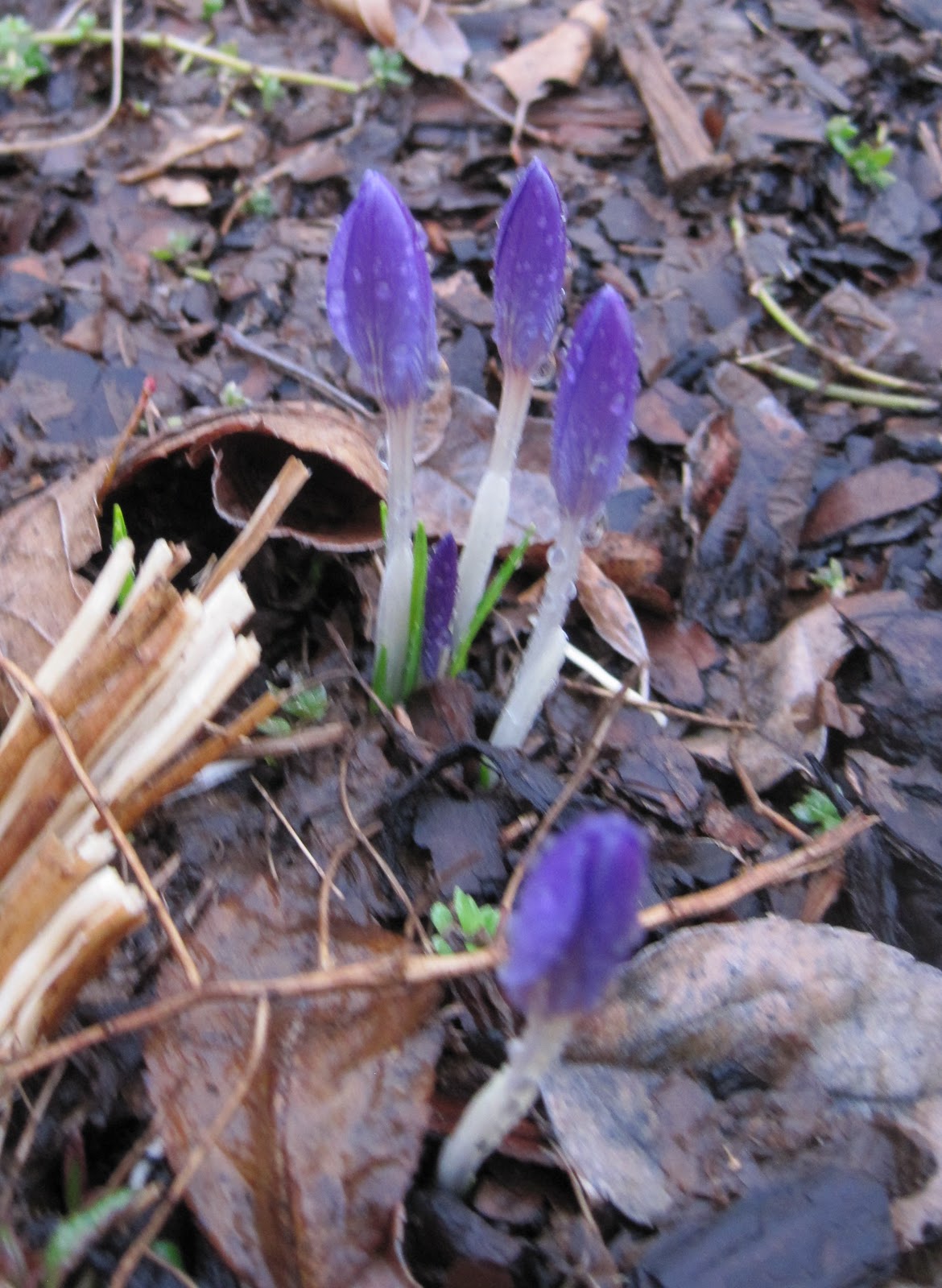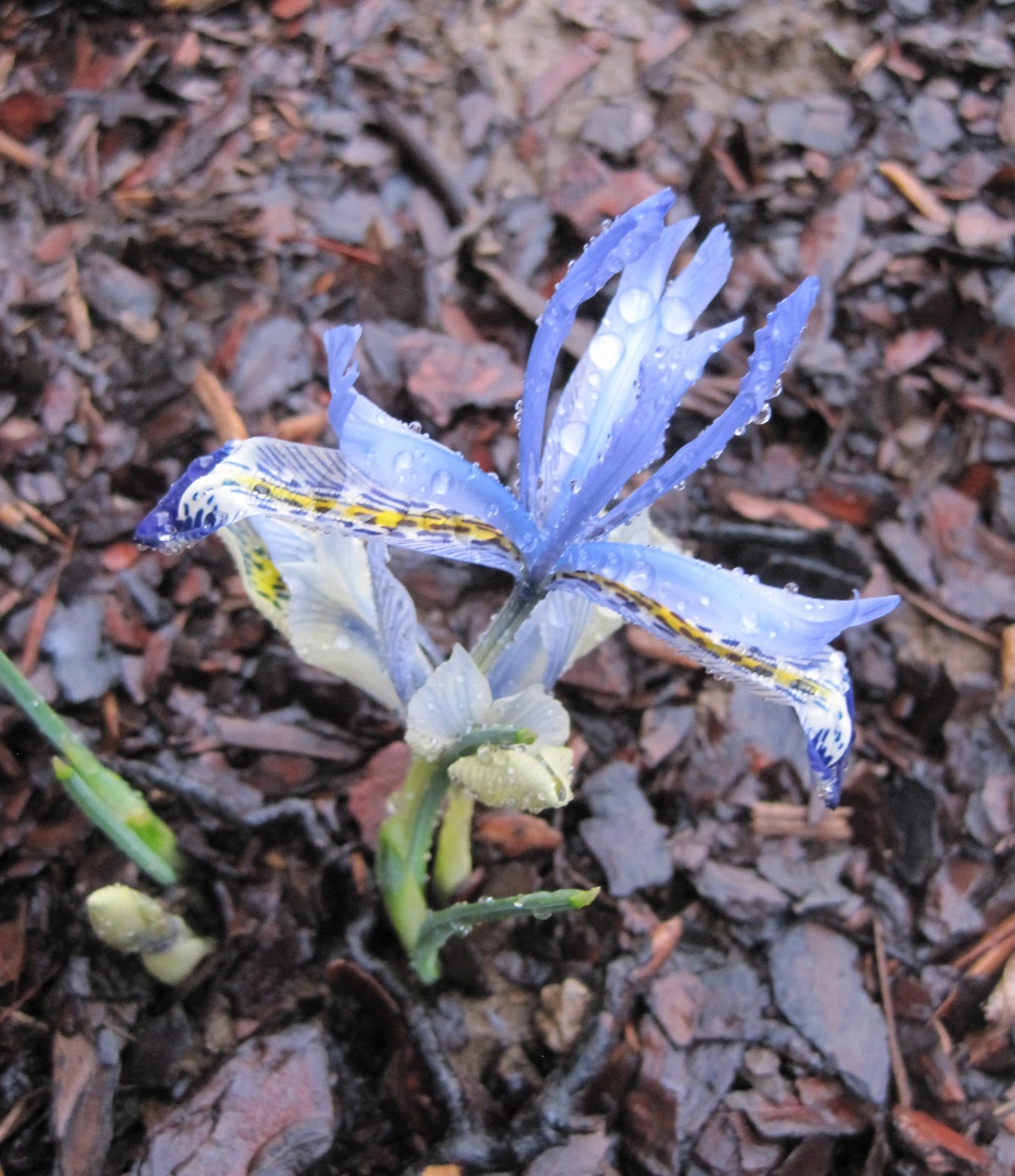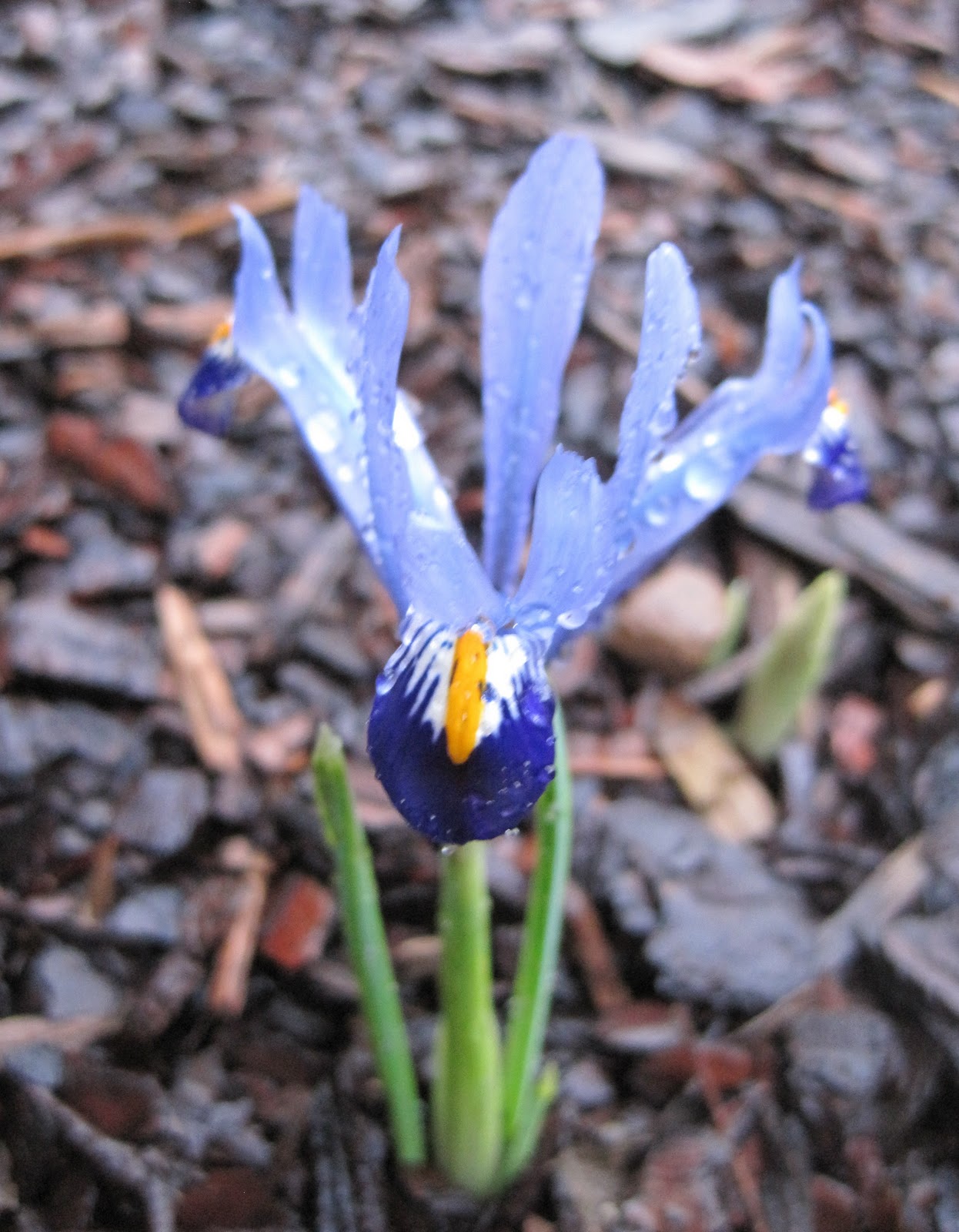Protect the pollen!
I can hear the rallying cry spread from crocus to crocus on these rainy days. Close up! Protect the pollen!
By any means, protect the pollen.
So how does this happen, this closing of crocus blooms on cloudy, rainy days?
There are probably some scientific theories about why and how flowers close, debated no doubt in the halls of great agricultural universities. But here in my garden, when I don’t remember or know why or how, I usually credit or blame the garden fairies, depending on the situation.
I imagine the garden fairies scurrying about closing up the crocuses to protect the pollen from the rain. Oh my! The commotion that ensues in the garden as they run from one crocus to another, shouting back and forth as the wind picks up, “I’ve got this clump, go over there and close those.”
“Don’t forget the ones in the lawn!”
“I can’t get this one to close, come help me!”
“Protect the pollen!”
And on and on they go until they have closed up all the crocuses throughout the garden.
Whew, what a job!
Fortunately, the newly blooming Irises, which chose a rainy day to open, do not need to be closed up to protect their pollen, which is presumably buried deep down in the flowers.
Some of those blooming in yesterday’s rain included Iris histrioides ‘Katherine Hodgkins’,
and Iris reticulata ‘Confab’ (maybe, could be another variety)
It is important for flowers to protect their pollen by whatever means they have available to them. Their very survival depends on that pollen!
According to The Standard Cyclopedia of Horticulture edited by Liberty Hyde Bailey (The Macmillan Company, 1915), page 1240,
“Most pollen is injured by exposure to rain and dew. The grains tend to swell and burst owing to the excessive osmotic pressure. It is for this reason that pollen when studied or germinated in the laboratory must be mounted in a sugar solution approximating the density of the stigmatic fluid. It is not a surprise therefore to find that nature has protected the pollen of many flowers from rain by structural means. Thus bell shaped hanging flowers, salverform corollas with a small eye which requires pressure to force a drop of water in, closed corollas of the snapdragon type, beard in the throat flowers that droop only in wet weather, flowers that close up during rain and many other contrivances are adaptations in part at least for the protection of the pollen.”
These openings and closings of flowers in response to something external to them are called nastic movements. When it is due to light, it is called photonasty. When it is in response to water, it is called hydronasty. Missing from the list of various nastic movements and their causes is what the nastic movement is called when it is due to garden fairies.
Well, clearly that should be called fairynasty.
(Garden fairies here… We garden fairies do not want you to know we close up the crocuses when it rains. It takes away from our reputation for being lazy overall if you know about all the stuff we do in the garden. Forget you read this.)





Fairynasty? Oh, I don't know . . . . Great info in a pleasing format. I will read more of these posts. Thank you so much.
Do I sound like a spammer?
Now, truly, Carol, you consistently amaze me in how you manage to be so funny and charming while imparting useful info. I just never really thought about pollen protection.~~Dee
So THAT'S why hellebores hang down…it makes it less annoying to know this.
I was so thrilled to see this happening with my Tommies! I want them to be pollinated and make offspring…gail
I just adore your writing and your blog! Thank you for all the smiles and smoothing over my anticipation for May to get here! Regards Michele
Keep on pollinatin' …
What about flowers that open according to the temperature, such as snowdrops. That close up tightly on cold days, but open wide in the warm sunshine, when bees are more likely to be foraging?
The garden fairies have put a forgetting charm on me, what was that again about the crocus?
I think we must have several generations of fairies tending our Eranthis colonies, and they are very skilled at it. I appreciate any help I can get, especially these sweet ones.
I have seen crocus close on cloudy days, but didn't know it was called photonasty. Thank you for improving my horticultural vocabulary
So funny, Carol. And informative, too. I am now going to think I hear my blooms talking back to me when I go outside!
Besides no self respecting honeybee would be caught outside on a dreary rainy day. It is bad for the couffure. LOL. V
What a cute post. I love the fairy tale. I have many fairies in my garden. They are the ones who sprinkle forget me not seeds in the garden.
oh my word! that iris is awesome!! I must have that iris in my garden! Your spring is so murch farther ahead of mine!
I love your garden fairies! I love learning about the science behind the wonders we witness in nature.